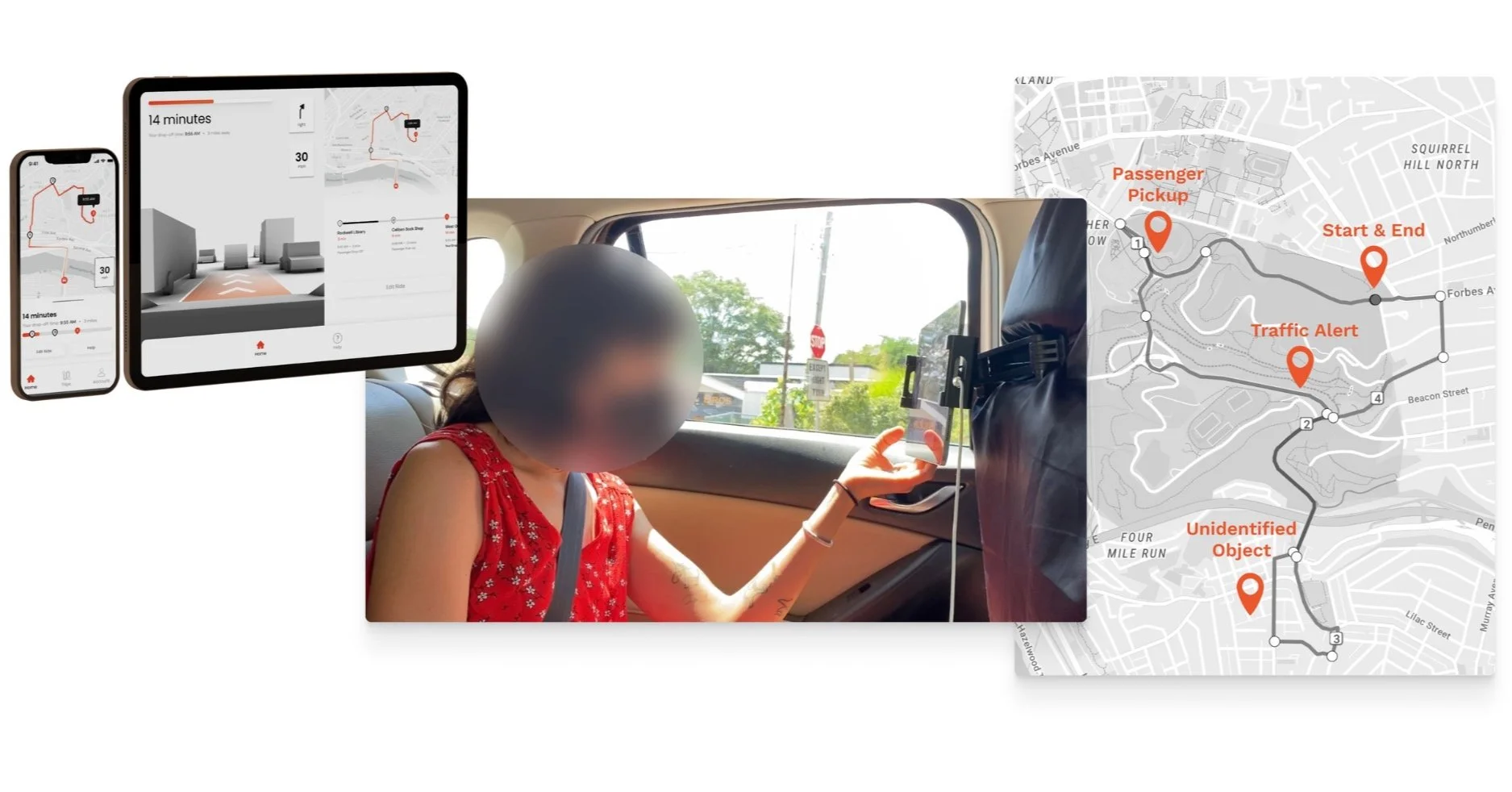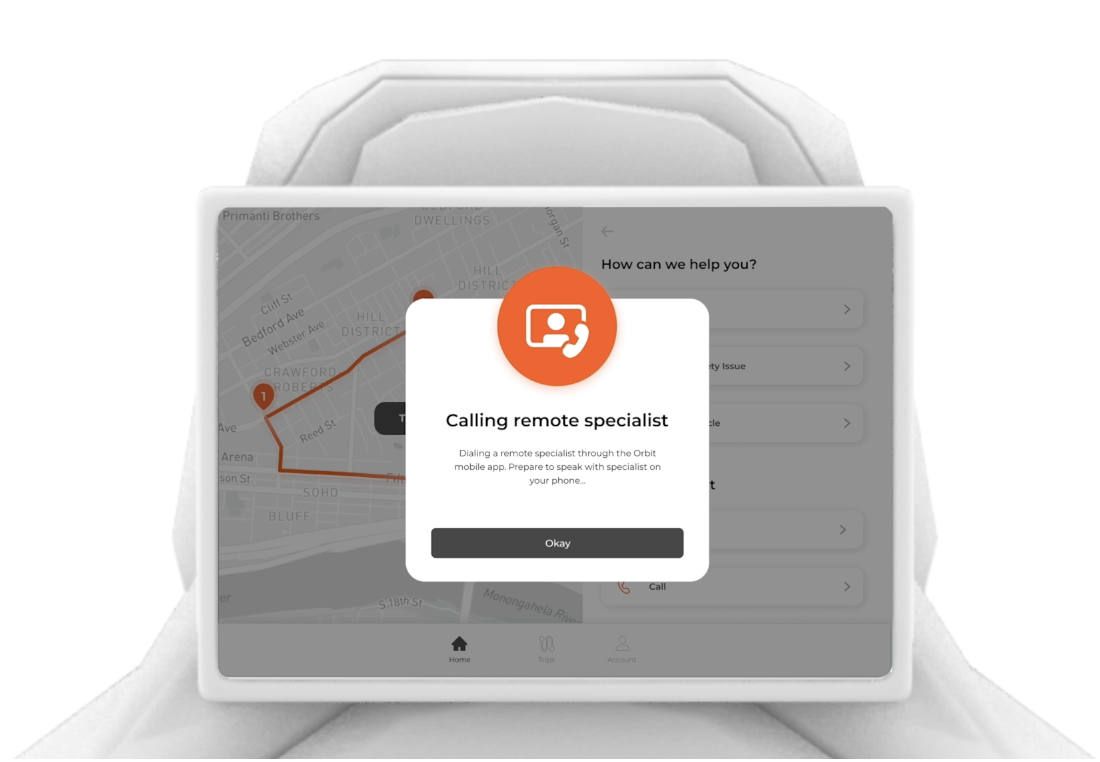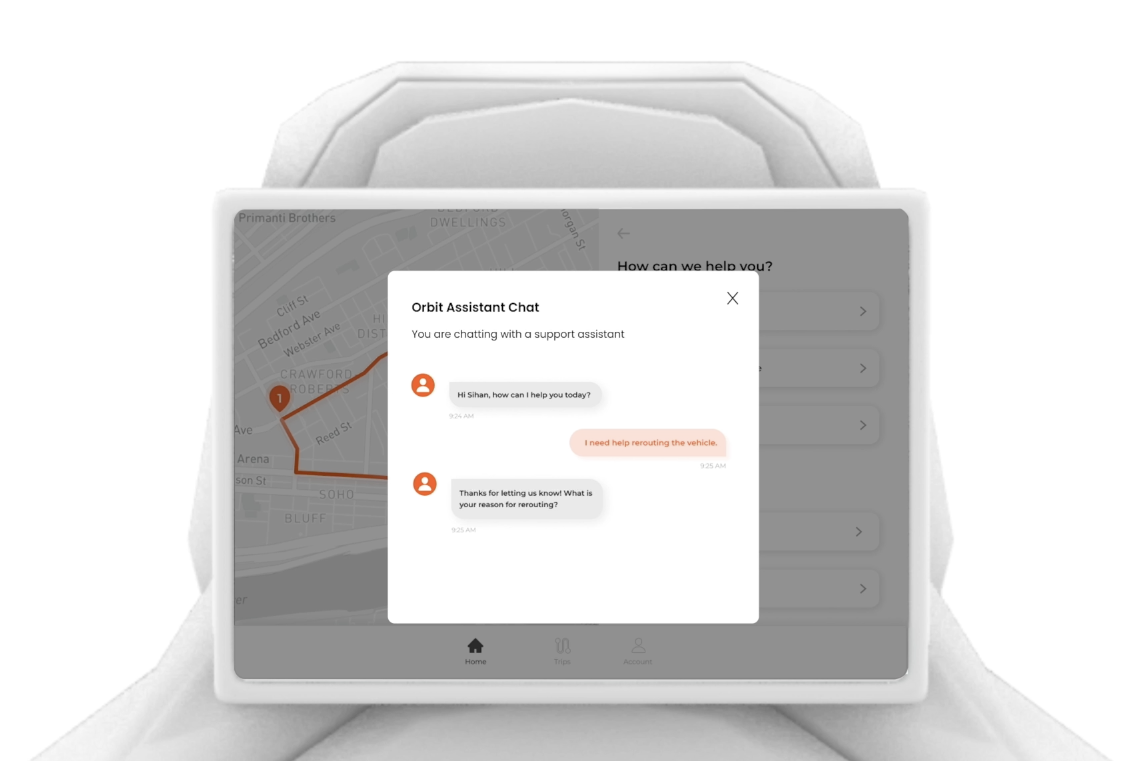Orbit
Designing an ecosystem of attendants in autonomous vehicles
Service Design | UI Design | UX Design | User Research | User Testing
Orbit—a multimodal ecosystem—is the solution to how to serve passengers onboard an autonomous vehicle. This solution:
Allows users to pre-select their seats in an autonomous vehicle
Notifies passengers about trip updates
Provides live support through multiple channels—phone calls or messaging
Features
Seat selection
While conducting user interviews onboard public vehicles, a common theme that came up was how perceived safety correlates with the number of passengers in the vehicle. At both ends of the scale, a passenger’s perceived safety is lower.
This led to the need for a seat selection feature.
When hailling for a ride, a user has the ability to view how the number of occupied seats and select their seat of preference. Being able to view the number of current occupants addresses the perceived safety risks. Selecting occupied seats in a vehicle further restores agency to the user
Notifications
The salience of notifications plays a large role in determining when a user is arriving at their destination. Survey results allowed us to plot the salience of a notifcation against how familiar a user is with their journey.
When users are very familiar with a journey, they rely on passive notications like landmarks or audio speakers. When users are less familiary with a journey, they are more on alert and need informational notications like stop names or direct instructions via a personal device.
Further, notification of irregular stops, such as road obstructions or picking up additional passengers, must be communicated in order to maintain the user’s trust with an autonomous vehicle.
Remote support
Another theme that came up during our intercept interviews was that users feel safer receiving support in the event of an emergency from someone external to the situation. Several users stated that a remote support agent could have a bigger picture or would be able to react quicker than one onboard a vehicle. More importantly, users stated they wanted different forms of communication with a support agent for varying discretion.
Outcome
Our research aimed to understand our users’ perceptions of autonomous vehicles and their likelihood to engage with them. This heavily informed Orbit as a solution to get users more comfortable with autonomous vehicles.





